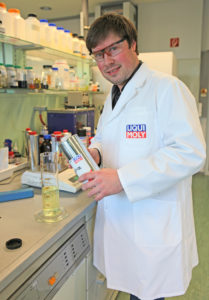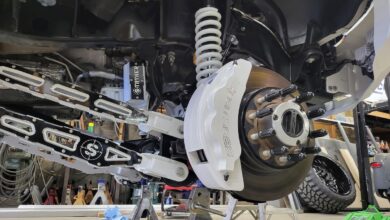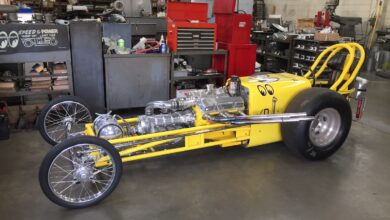Hybrid Engine Care Q&A
 Vehicles with a hybrid drive combine two different power sources in one car-an electric motor and a combustion engine. Unlike conventional vehicles that are powered exclusively by gasoline or diesel fuel, the combustion engine of a hybrid car only runs in certain situations and then often under a low load.
Vehicles with a hybrid drive combine two different power sources in one car-an electric motor and a combustion engine. Unlike conventional vehicles that are powered exclusively by gasoline or diesel fuel, the combustion engine of a hybrid car only runs in certain situations and then often under a low load.
With the potential for more hybrids to visit your shop, David Kaiser, head of research & development at German oil and additive manufacturer LIQUI MOLY, explains what problems such low engine use can lead to, and how additives can help drivers and garages avoid them.
What are the differences between the requirements of a combustion motor in a hybrid car compared to a conventional vehicle?
DK: In a hybrid vehicle the combustion motor is not permanently used. When starting, in urban traffic and on short routes the energy comes from the electric drive. Only over long distances, from medium speeds or in the event of an empty battery does the combustion motor switch on. To summarize, this is a very one-sided driving profile.
But long distances are less wearing than short journeys, aren’t they?
DK: That’s right. Compared to conventional cars, hybrid vehicles have a significantly shorter range and play to their strengths in the short and medium range. The combustion motor is therefore usually only used for short periods. This is good for the environment, but bad for the engine.
How come?
DK: Due to the low consumption of hybrids, fuel remains in the tank longer and therefore ages more. Gasoline and diesel fuel change their configuration with the effects of air or the oxygen, moisture and temperature therein. This worsens cold start and driving behavior in the longer warm-up of the motors in hybrid vehicles.
The fuels are subjected to a natural aging and oxidation because of this. By adding oxygen, the fuel oxidizes. And this can lead to deposits. Overall, the properties of the fuel are worsened by this. In extreme situations, it will eventually become unusable.
How can car drivers act against this?
DK: The quality of the fuel can be stabilized with additives. LIQUI MOLY has developed such an additive specifically for hybrid vehicles. One of the tasks of the additive is to slow down the aging process of the gasoline and therefore keep its quality stable.
Can the deposits mentioned in the tank also cause problems?
DK: The requirements for a well-functioning engine are motor oil, electricity, air, coolant and fuel. If one of these components is impaired, a failure is possible. Tank deposits can block the fuel filter. However, these many deposits are only formed in exceptional circumstances. The core problem with deposits lies somewhere else.
Where exactly?
DK: The latest developments in motor technology are flowing into hybrid vehicles. These modern and efficient motors present the greatest of demands on fuel quality.
Particularly in the case of irregular and short-term use of the combustion motor, the risk is great that deposits will be formed in the injection system. These worsen the injector spray and the fuel combustion and this ultimately leads to poor engine performance. Un-combusted fuel can get into the motor oil and thin it. That’s why a clean fuel system is so important.
How is this kept clean?
DK: A steady and consistent motor operation helps a lot but is not the only salvation and is an exception in combustion motors in hybrid vehicles.
Special cleaning additives in our hybrid additives dissolve existing deposits and prevent new sticky, paint- or resin-like deposits from forming. This means I can use the additive for prophylaxis or in the event of existing problems. For prevention, it has to be regularly added to the gasoline in the tank.



